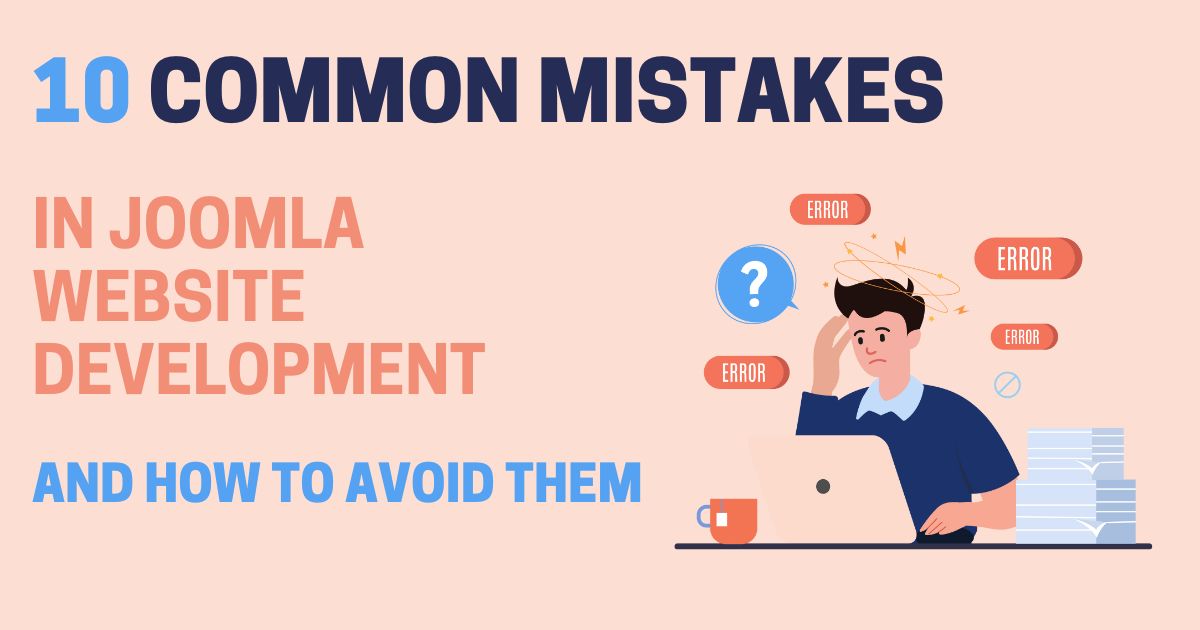Migrating your website to Joomla can be a daunting task, especially if you are new to Joomla website development. However, with the right approach and a clear plan, you can ensure a smooth and successful transition. Joomla offers a robust and flexible platform
that supports extensive customization, making it a popular choice for many developers and businesses. In this step-by-step guide, we will walk you through the process of migrating your website to Joomla, covering key aspects such as Joomla templates, extensions, SEO tips, security, and more.
Step 1: Plan Your Migration
Before diving into the migration process, it's crucial to have a clear plan in place. Assess your current website and identify all the content, features, and functionalities you need to migrate. Create a checklist that includes:
- Pages and posts
- Images and media files
- User data
- Custom scripts and functionalities
- SEO settings
Step 2: Choose the Right Joomla Hosting
Selecting the right Joomla hosting provider is critical for the performance and reliability of your website. Look for a hosting provider that offers:
- Optimized servers for Joomla
- Excellent customer support
- Robust security features
- Scalability options
A good Joomla hosting provider will ensure that your site runs smoothly and efficiently during and after the migration.
Step 3: Set Up Joomla
Install Joomla on your new hosting environment. Most hosting providers offer one-click Joomla installations, making this process straightforward. If you prefer manual installation, download the latest Joomla package from the official website and follow the installation instructions.
Step 4: Select and Customize Joomla Templates
Choose a Joomla template that matches your website’s design and functionality needs. Ensure the template is responsive, customizable, and compatible with the latest Joomla version. Customize the template to align with your brand’s look and feel. Joomla templates can be easily customized through the template manager in the Joomla backend.
Step 5: Install Necessary Joomla Extensions
Joomla extensions enhance the functionality of your website. Identify the essential extensions needed for your site, such as contact forms, image galleries, and e-commerce solutions. Use the Joomla Extensions Directory (JED) to find reliable and well-supported extensions. Install and configure these extensions to match your website’s requirements.
Step 6: Migrate Your Content
Migrating content is one of the most critical steps in the Joomla migration process. You can manually copy and paste content from your old site to Joomla or use migration tools to automate the process. Tools like SP Transfer or J2XML can help you transfer content, users, and other data efficiently. Ensure that all content is properly formatted and displays correctly on your new Joomla site.
Step 7: Set Up SEO
Implement Joomla SEO tips to ensure your site remains visible to search engines. Key steps include:
- Enabling SEF (Search Engine Friendly) URLs
- Setting up meta titles and descriptions for each page
- Creating a sitemap using extensions like JSitemap
- Using SEO extensions such as sh404SEF to enhance your site's SEO capabilities
Step 8: Ensure Joomla Security
Security is paramount in Joomla website development. Protect your site by:
- Keeping Joomla, extensions, and templates updated
- Using strong, unique passwords
- Enabling two-factor authentication
- Installing security extensions like Admin Tools
- Regularly backing up your website with tools like Akeeba Backup
Step 9: Test Your Joomla Site
Before going live, thoroughly test your new Joomla site to ensure everything works correctly. Check for broken links, missing images, and formatting issues. Test all functionalities, including forms, search, and interactive elements. Make sure your site is responsive and performs well on different devices and browsers.
Step 10: Go Live and Monitor
Once you are satisfied with the testing, it’s time to go live. Point your domain to the new Joomla site and monitor the transition. Keep an eye on your site’s performance, security, and SEO rankings. Address any Joomla update issues promptly and make adjustments as needed.
Step 11: Learn and Optimize
Continuously learn about Joomla and optimize your site. Use Joomla tutorials and community resources to stay updated with the latest features and best practices. Regularly review and improve your site’s performance, security, and SEO.
Conclusion
Migrating your website to Joomla can be a seamless process if you follow these steps and plan carefully. By choosing the right Joomla hosting, setting up Joomla correctly, selecting appropriate templates and extensions, and focusing on SEO and security, you can build a robust and scalable website. Stay informed with Joomla tutorials and community resources to keep your site optimized and secure. Happy migrating!
With this comprehensive guide, you are well-equipped to navigate the complexities of Joomla migration and leverage the powerful features of Joomla for your website development needs.




